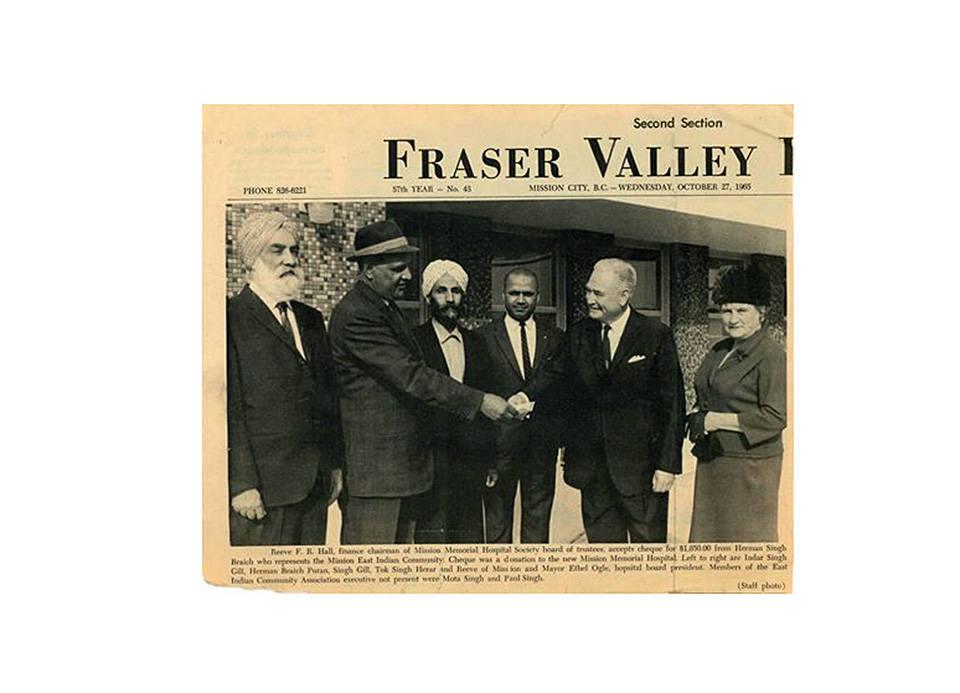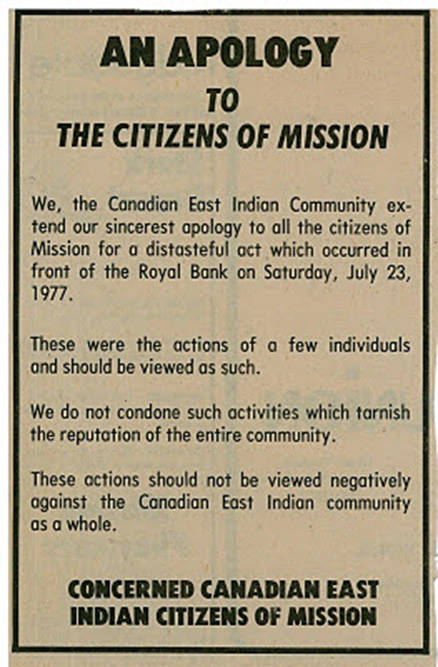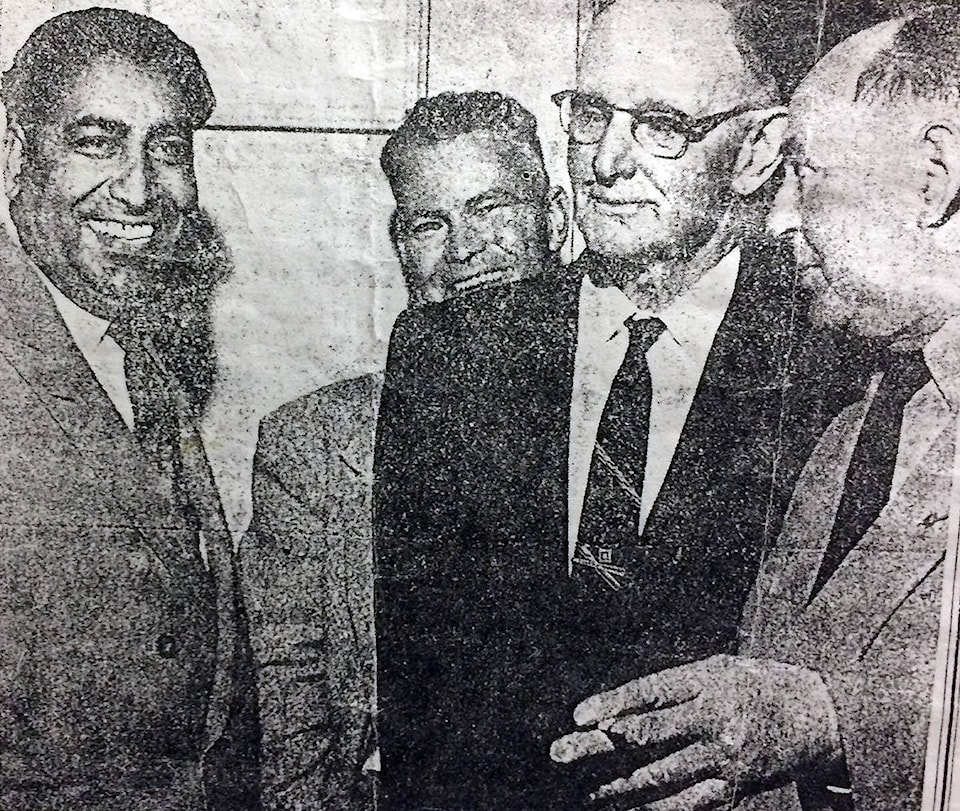By Ken Herar
I am honoured and privileged to be doing a three-part series on the history and contributions of the South Asian (Sikh) community of Mission in celebration of the 125th anniversary of our city.
I was born and raised in Mission and come from a pioneer Sikh family. The diverse history and the amazing personalities that have shaped our town are stories that need to be shared. Every generation has their diversity story that rejuvenates them. Looking at and examining the young history of my community shows a story of struggles, inspiration and love for community. One thing is very clear: looking back at the125 years and, as Canada celebrates its 150th, we, as a collective community, can be extremely proud of our hometown, where diversity flourishes.
South Asians who came from the Punjab felt very comfortable to live in such a friendly community where foreigners were welcomed with such warmth. My mother Kuldip often shares a defining example of this. When she came to Mission, it was the kind Rotarians and citizens who took her out to go shopping because her English wasn’t perfect just yet. These are the kinds of stories I constantly hear from other South Asian families, where neighbours were getting to know their neighbours while adjusting to their new home country.
Many of the South Asian families started arriving in the 1930s, and Mission City was an attractive place where the mill and lumber industry were thriving. Even though the Sikh temple was in Abbotsford, the majority of the Sikh families resided in Mission City.
South Asian families came to Canada with very little and had to make many personal sacrifices to provide for their families. Pioneer Sikh families made a big effort to adjust to their new land by learning English and wearing western clothing when outside of their home. Some even took off their turbans because they wanted to fit in and didn’t want to be looked down upon or discriminated against.
In the census of 2006, 2,220 South Asian visible minorities resided in Mission, making up 63.2 per cent of the city’s visible minorities, and 2,180 people in Mission claimed South Asian ancestry, making up 3.8 per cent of the total population in the city.
When we look back at the last century and a quarter, in my humble opinion, there have been four memorable moments that are cemented in history for the South Asian community in Mission.
In 1950, Naranjan Grewall became the first Hindu (as it was phrased at that time) in Canada to be elected to public office, after the voting franchise was extended to visible minority groups in 1947. In 1954, he was appointed to the position of mayor of Mission City by the board and later ran for the CCF in the Dewdney riding in 1956. On October 27, 1965 in this paper, members of the East Indian community of Mission are pictured donating a cheque to the local hospital, setting an example that cross-cultural relationships were essential.
On July 23, 1977, there was a violent incident that took place in Downtown Mission, where a few members from the South Asian community got into a fight with each other. The “Concerned Canadian East Indian Citizens of Mission” took ownership and took an ad in this paper to apologize for the actions of a few. This outpouring gesture showcases that they wanted to be recognized as Canadians first and foremost and didn’t want any stigma or stereotypical comments attached to a young growing Sikh community.
The opening of the Sikh Temple on the Lougheed Hwy in 1989 was also a major highlight. The struggles and the divisive debates that occurred in the previous years to get it zoned and built is long behind us now. A more detailed story behind this beautiful landmark will be featured in part two of this series.
The two most legendary personalities from the Sikh community who graced Mission, and both employed hundreds of people, owning several large mills in the area, were Herman Braich Sr. and Naranjan Grewall.
Both men came to Mission around the same time, in the 1940s, and made impacts that are still felt. For more information on Braich and Grewall, you can visit the South Asian section at the Mission Museum.
Museum manager Hazel Eason said, “The Mission Museum strives to tell the story of our vibrant community with the inclusion of all cultural groups. To these efforts, we have recently re-worked our multi-cultural exhibit to more clearly tell the stories of our South Asian community, their contributions to Mission itself, as well as British Columbia and Canada as a whole. We invite you to visit us to learn more during our regular opening hours Thursday-Friday 10-4 and Saturday 10-1.”
You can contact Ken Herar at:
kenherar@gmail.com.


